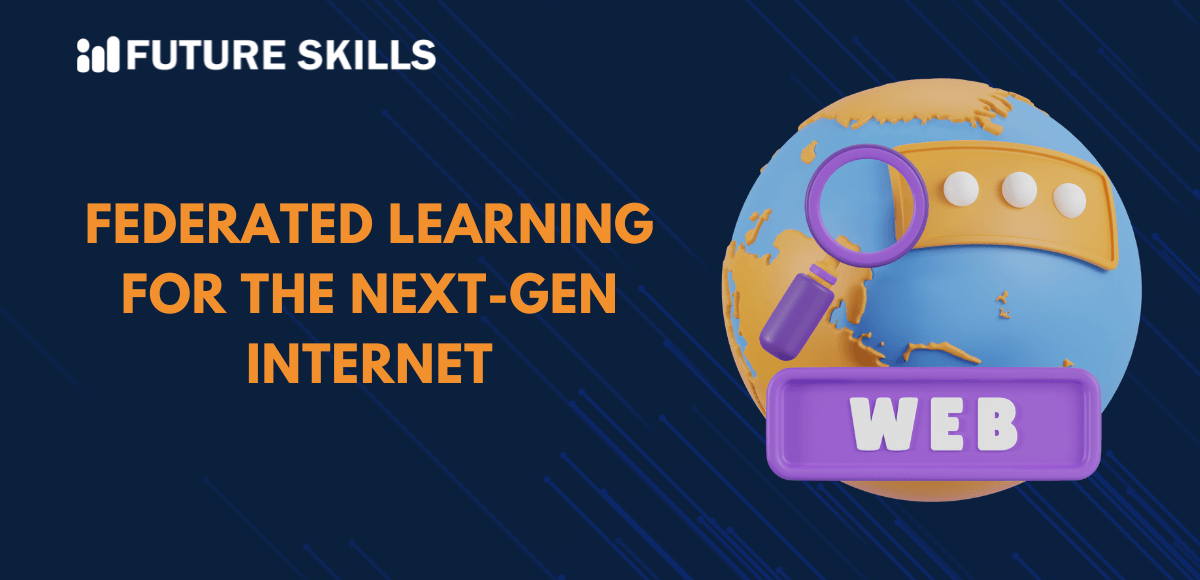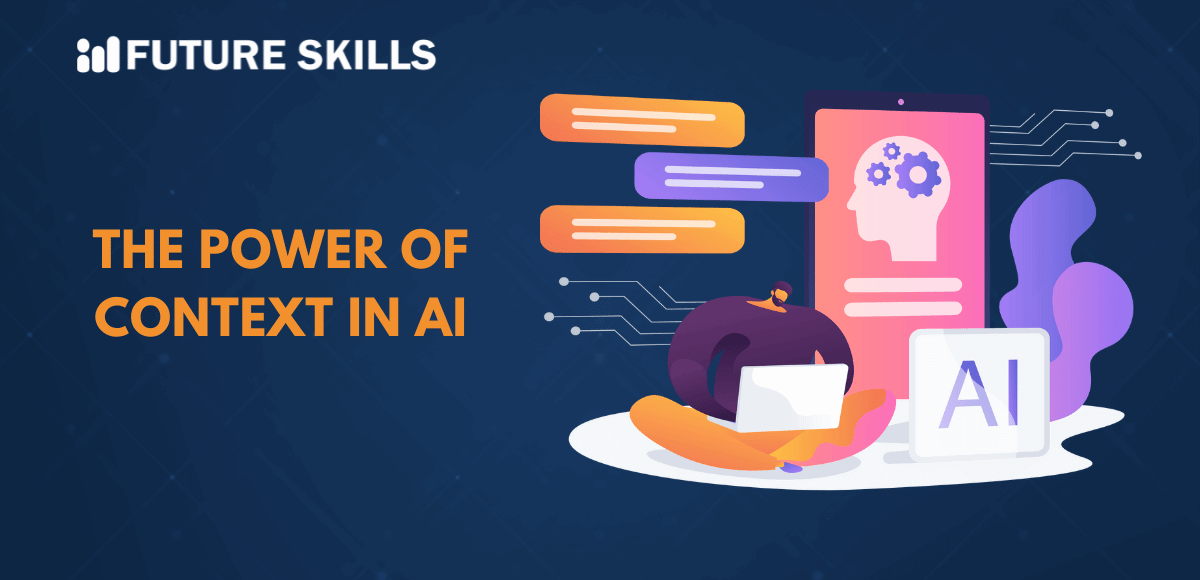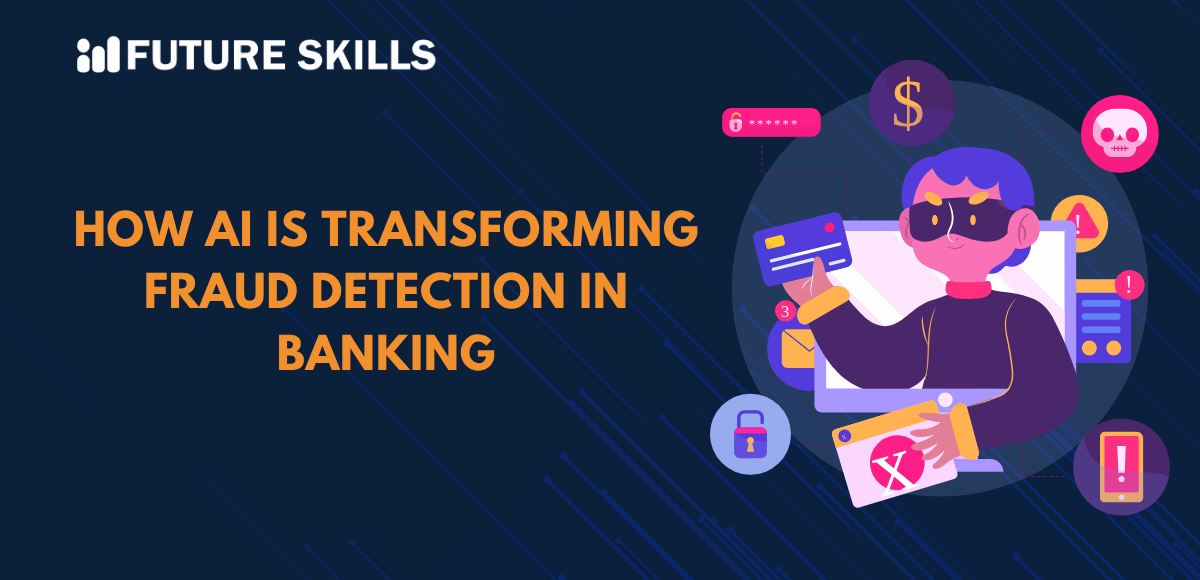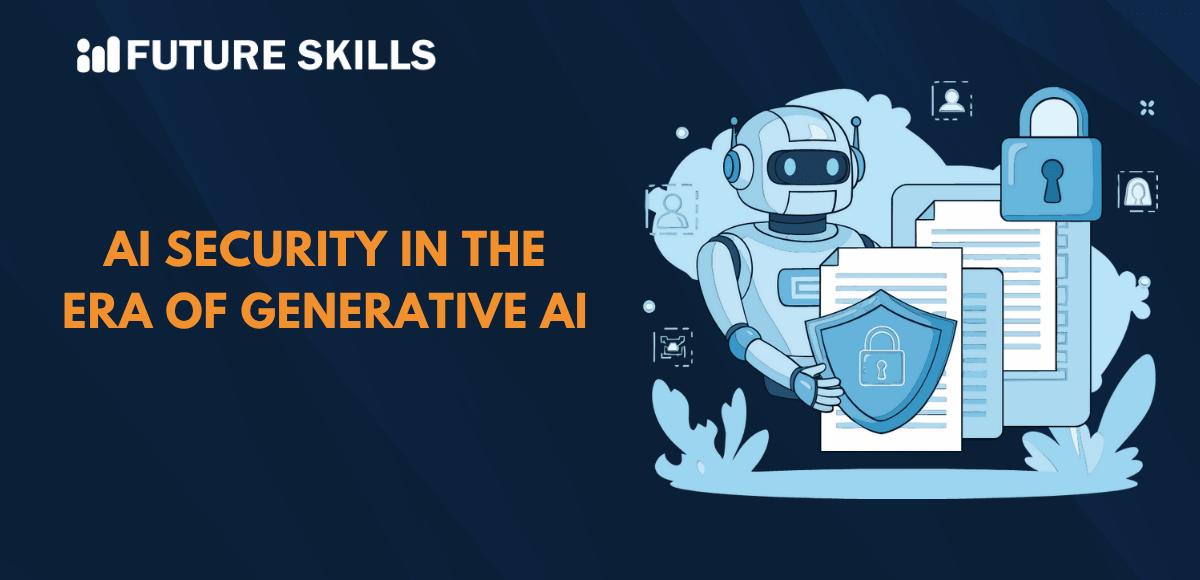The massive scale of technological revolution in the world has been largely driven by communication. Starting from telephones to wireless communication, we have come a long way with technological advancements dictating changes in the way we lead our daily lives. Think of the technological landscape a decade ago, when federated learning in 6G network might have been a concept restricted to research papers only. As of now, the widespread adoption of 5G networks has created the perfect stage for the arrival of 6G networks.
The benefits of unprecedented connectivity and almost-zero latency in 6G networks showcase their potential to reshape industries and our daily lives. At the same time, 6G networks are more susceptible to the problem of data privacy. Let us find out how federated learning can address data privacy concerns in 6G networks.
Level up your AI skills and embark on a journey to build a successful career in AI with our Certified AI Professional (CAIP)™ program.
Establishing the Connection between AI and 6G
Federated learning is a decentralized approach for training AI models. You might wonder how artificial intelligence and 6G are related to each other. Imagine a world where wearable devices can detect health anomalies before you notice any symptoms or cars predicting traffic patterns with unparalleled accuracy. The answers to “How will AI be used in 6G?” draw attention towards such examples. Unlike the previous generations of telecom networks, 6G will have AI as a native component in its architecture.
Artificial intelligence will play a major role in defining how 6G networks operate, handle service delivery and manage their resources. At the same time, you should know that traditional approaches for training AI models involve collecting large amounts of data in centralized locations. The traditional approach creates privacy risks by establishing a single point of failure. Millions of devices will generate data at the edge of the network in 6G. As a result, it cannot accommodate centralized models due to limitations in scalability and lack of safeguards for user privacy.
Federated Learning and Shift in Definition of Privacy
The implementation of 6G networks will enable billions of devices, including autonomous vehicles, augmented reality headsets and advanced healthcare systems, to collect large volumes of sensitive data. If the sensitive personal data of millions of users is in a centralized location, then it may create unprecedented problems. The federated learning AI training approach provides a revolutionary solution by bringing AI models closer to the data. Federated learning takes a detour from the centralized approach for training AI models by storing all the training data in one server.
Federated learning relies on local training, thereby implying that every device in the network will store their data locally. Each device will train a copy of the AI model by using its private data. Rather than sending the raw sensitive data, federated data sends the updates or the newly learned patterns to the central server. Subsequently, the central server will combine the updates intelligently to create a more accurate and robust global model. The global model will be sent to the individual devices which can use it to refine their local models and continue with the learning process.
You can notice that the iterative learning process helps AI models in learning from large and diverse datasets without exposing private information. One of the easiest ways to explain federated learning involves the example of a group of students working together on a book. Each student in the group shares their refined content without sharing their personal notes and research.
Enroll now in the Mastering Generative AI with LLMs Course to understand how language models work and their capabilities to solve real-world problems.
How Will Federated Learning Help 6G?
The role of federated learning for wireless networks like 6G revolves around unraveling new possibilities and resolving critical challenges. The following points can help you understand why federated learning might be the biggest strength of 6G networks.
-
Unparalleled Privacy Protection
The foremost reason to think of the federated learning approach in 6G networks is the possibility of creating privacy-preserving AI at scale. Artificial intelligence has been under scrutiny for concerns of exposing the sensitive personal data of people collected for training AI models. With 6G networks, the concerns of data privacy will become more prominent. Federated learning offers a powerful mechanism for training AI models with higher accuracy while keeping private data on local devices. As a result, federated learning can ensure significant reduction in risks of data breaches and build trust in AI systems.
-
Lower Communication Overheads
The expectations from 6G networks suggest that billions of devices will opt for 6G. If the billions of devices send raw data to a central server, then ultra-fast networks like 6G may also encounter setbacks. Federated learning helps in reducing communication overhead by transmitting only small model updates. The unique training approach in federated learning will help in creating more energy-efficient and faster 6G networks.
-
Scalability at the Edge
The most striking highlight of 6G networks will be a spontaneous growth in the number of connected devices at the ‘edge’. You must know that the ‘edge’ represents the devices which are closer to the source where data is generated. As a result, the devices at the ‘edge’ don’t rely on distant cloud servers. The rise of federated learning in 6G network will make the most of this distributed environment. Local data processing on the ‘edge’ devices will reduce the need to send large volumes of raw data throughout the network, thereby reducing latency and communication bottlenecks. Ultimately, federated learning will help in achieving privacy at scale in 6G networks for real-time applications.
-
Robustness and Personalized AI Experiences
Federated learning follows a distributed approach to training AI models, thereby preventing the concerns associated with a single point of failure. The overall learning process continues in federated learning even if a few devices at the edge are offline. In addition, local training of the models on data from individual devices helps in creating personalized AI experiences.
Level up your ChatGPT skills and kickstart your journey towards superhuman capabilities with Free ChatGPT and AI Fundamental Course.
Discovering Use Cases for Federated Learning in the Domain of 6G Networks
All the talk about federated learning improving privacy in AI systems based on 6G networks does not make any impact until you notice some real use cases. Federated learning has far-reaching implications in the domain of 6G as it will revolutionize many sectors. You can also come across the following use cases of federated learning in the future.
-
Medicine and Healthcare
One of the first answers to “How will AI be used in 6G?” draws attention towards healthcare where federated learning can help in training AI models on patient data without sharing sensitive patient records. The combination of federated learning and 6G can lead to promising breakthroughs in early diagnosis and development of personalized medicine.
-
Smart Governance
Federated learning may enable the creation of more smart cities with the help of real-time traffic optimization and intelligence waste management systems. The use cases of federated learning in smart cities can also entail predictive infrastructure maintenance and development of smart energy grids. Federated learning can help in making the most of data from multiple devices and sensors for smarter governance albeit without exposing citizen privacy.
-
Industry Automation
Federated learning can also help smart factories in optimization of robot movement, prediction of machine failure and improving product quality. AI models on 6G networks can use federated learning to acquire data from different sensors and machines in the factory. At the same time, federate learning ensures adequate safeguards for data sovereignty in each manufacturing unit.
-
Autonomous Vehicles
The significance of federated learning in AI systems during the 6G revolution will be visible in improvements for autonomous vehicles. Federated learning will ensure that self-driving cars can learn from each other’s experiences of pedestrian behavior and road conditions. With federated learning, all vehicles don’t have to share their driving patterns or sensitive location data with a central authority. As a result, the world can have more efficient and safer autonomous vehicles in the future.
Explore the implications of supervised, unsupervised, and reinforcement learning in diverse real-world use cases with Machine Learning Essentials Course
Challenges for Adoption of Federated Learning
The adoption of federated learning for 6G networks will also bring some unique challenges. For instance, federated learning may create new security challenges as malicious actors can try sending infected model updates. In addition, devices in 6G networks will have different battery life, network connectivity and computational power. The differences in the devices will be responsible for creating challenges for federated learning algorithms.
Final Thoughts
While the journey to adoption of 6G networks might be a complex one, it presents a lot of opportunities. Federated learning can help in empowering artificial intelligence in 6G networks at scale and protecting privacy. The significance of federated learning in 6G connectivity will be clearly visible in use cases across different sectors. For instance, federated learning can help in creating safer and more efficient self-driving vehicles or secure patient health record systems. Learn more about the significance of federated learning in the domain of artificial intelligence now.






